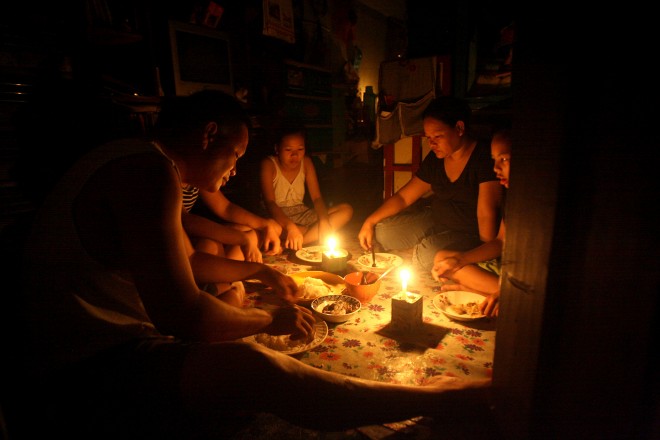The Department of Energy has ordered power industry stakeholders to get to the bottom of Tuesday night’s power outage that resulted in the loss of electrical supply to major portions of Metro Manila and surrounding provinces for one hour and 20 minutes.
READ: Power outage hits Metro Manila, nearby provinces
In a report on Wednesday, the DOE said it continues to monitor the power situation in Luzon and the Visayas following the tripping of eight large power plants with a total of 2,407 megawatts capacity at around 7:30 p.m. of Nov. 15.
Energy Secretary Alfonso Cusi directed all involved industry participants, including generation companies, the Philippine Electricity Market Corporation, the National Grid Corporation of the Philippines (NGCP) and distribution utilities to explain in writing what could have occurred in their respective areas of concern.
The occurrence resulted in the loss of power to several localities within the Luzon grid which lasted until 8:50 p.m. as reported by NGCP, the transmission system operator.
Based on the initial findings, data showed that the three units of the 600-MW Sta. Rita and two units of the 526-MW San Lorenzo natural gas power plants in Batangas tripped, creating frequency imbalance in the system at 58.68 hertz.
According to NGCP, there were also tripping of motor-sensitive loads in the area resulting in the frequency to bounce back to 61.08 hertz.
However, there was a second set of plants totaling to 1,371 MW that tripped, which were San Roque (95 MW), San Gabriel (420MW), QPPL (452 MW), Bacman (136 MW), Trans Asia (27 MW), and GN Power (151 MW).
“The NGCP reported to the DOE that the power situation returned to normal or fully restored at around 8:50 p.m. after an hour of rigorous restoration,” Cusi said.
“I am asking for a comprehensive report and will tap experts to come up with a fair analysis on what transpired,” the Energy chief said in a statement. “We will look into the entire system and the specific roles and responsibilities of the stakeholders. This is to assure the public that there will be enough power supply during the holiday season.”
As of 12:00 p.m. on Wednesday, the power supply capacity in Luzon stood at 9,925 MW with a demand of 8,183 MW and a reserve level of 1,742 MW.
For its part, First Gen Corporation — the operator of the Sta. Rita and San Lorenzo power plants that figured in the first tripping incident — said that “it was a grid/line event fault” that resulted in the triggering of its plants’ protection system to prevent damage.
“It was not only our plants that went down,” First Gen president and COO Giles Puno said in a statement. “There were four other plants that went down which already suggests that it was not specific to our gas plants. It was actually our gas plants that were immediately restarted to deliver much needed supply to normalize the system.”
He explained the tripping of power plants when there is a fault in the system will occur “at the same time within seconds.”
“This is because the protection system of these power plants is triggered to prevent them from getting damaged,” Puno said.
“In the meantime, it is also good to hear from the other power generators and grid operator to find out if there were any issues they faced in their operations,” he added. “We are also interested to find out what really happened.” TVJ
